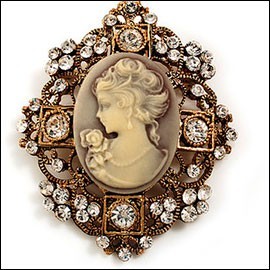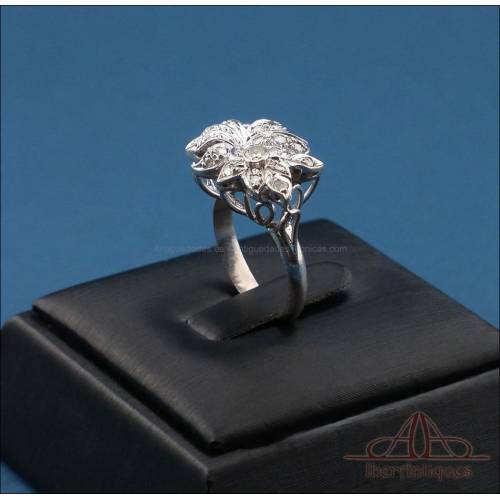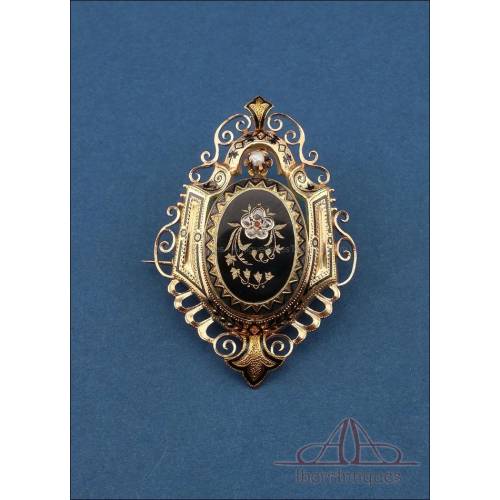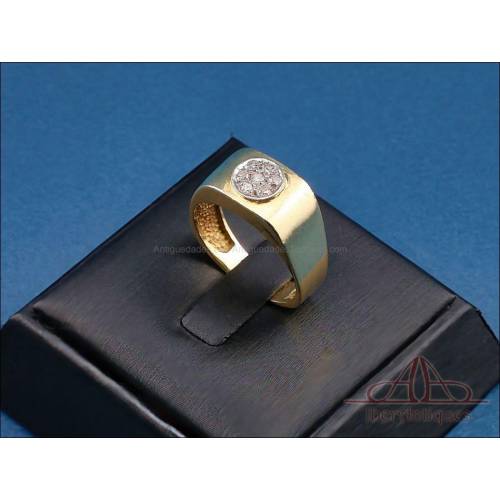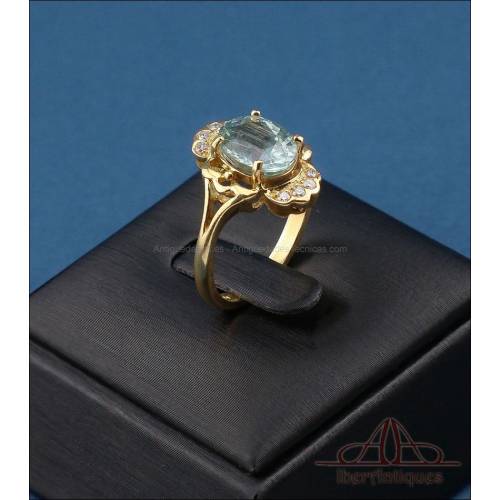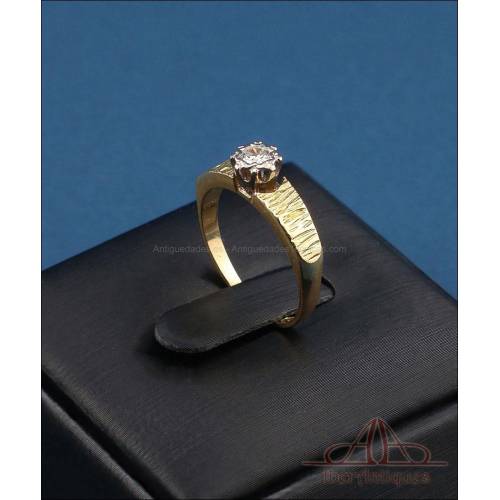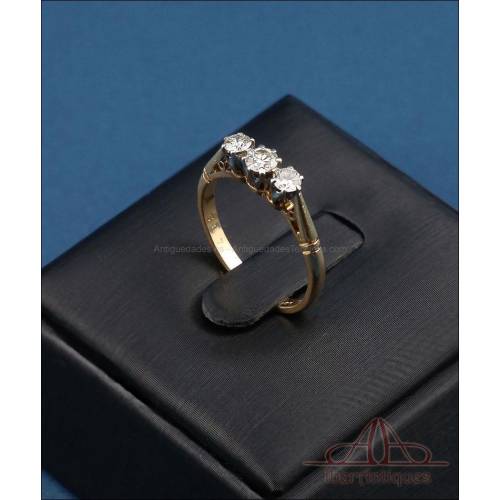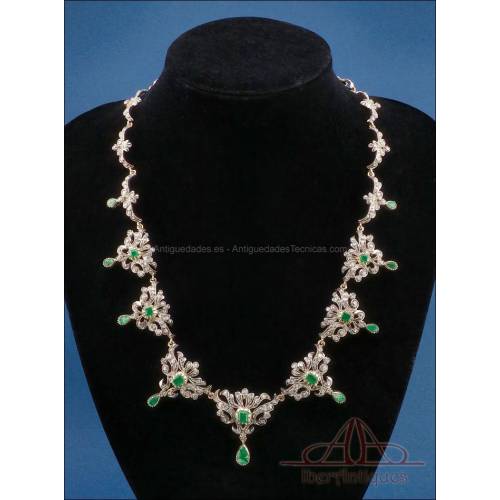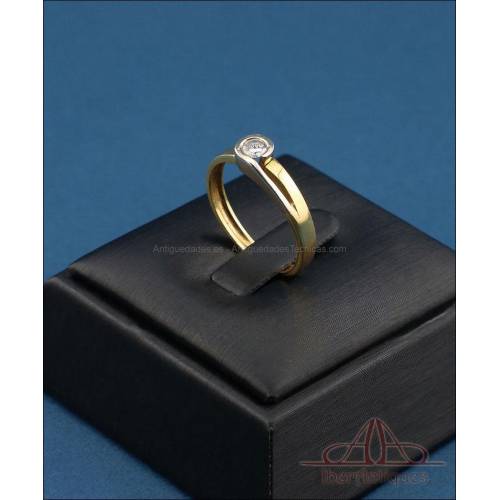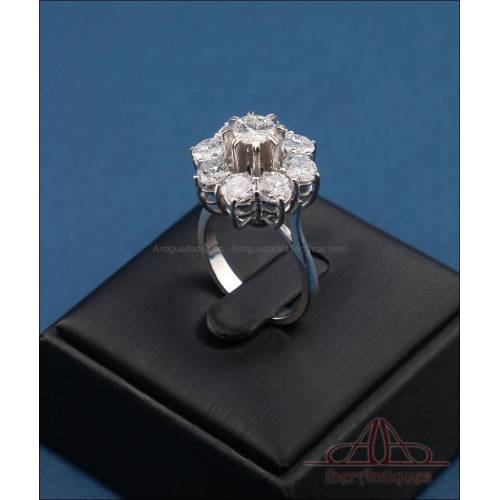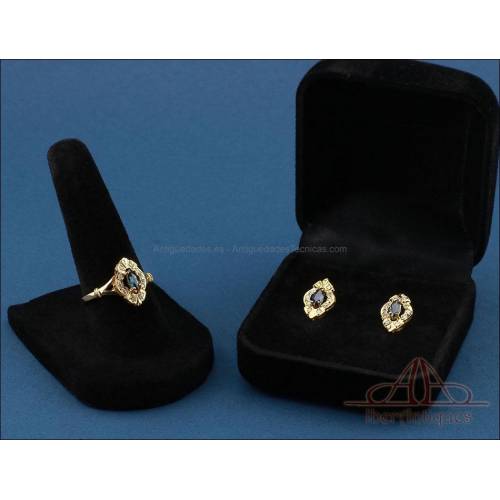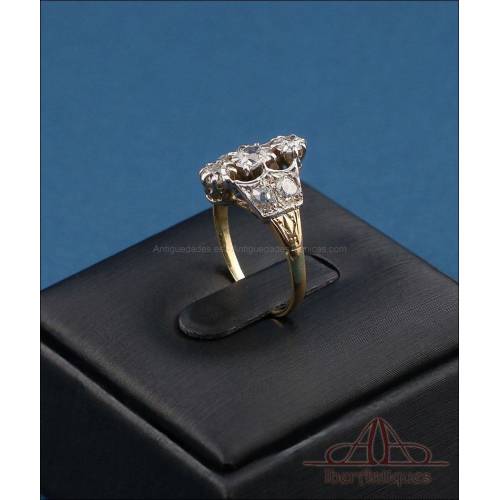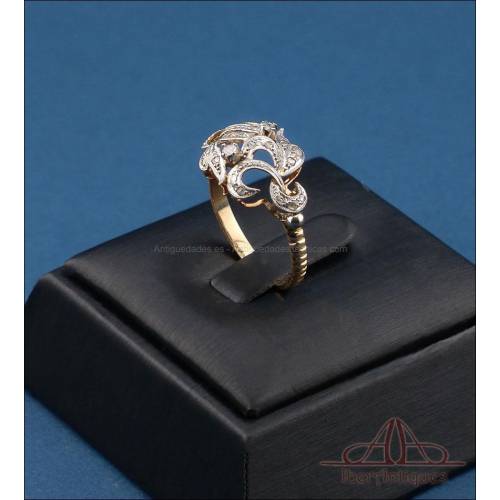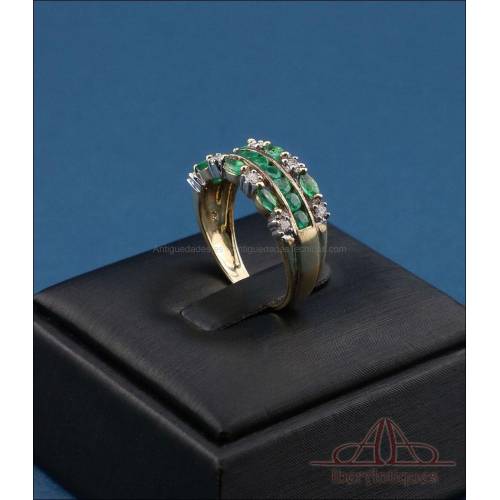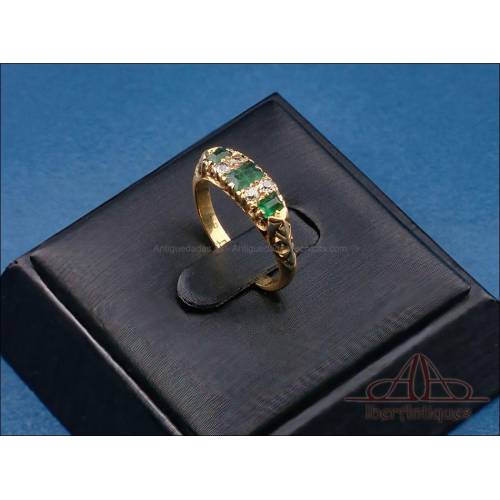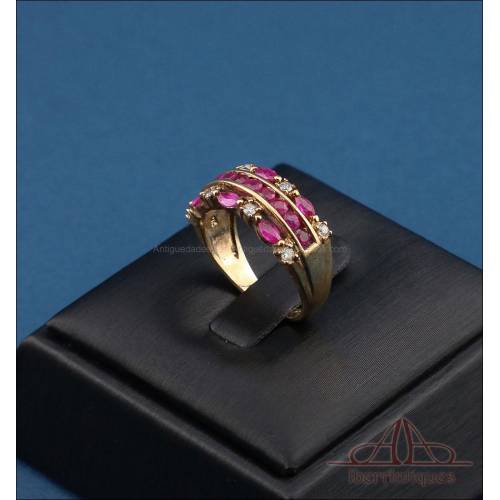Antique Jewelry
Collecting antique jewelry is a two-fold hobby. On the one hand, it is a pleasure to search, find and get hold of the most beautiful and special pieces to include them in our collections. On the other hand, quality jewelry is always a great investment that increases in value over time. The beautiful designs and noble materials used in the making...
Collecting antique jewelry is a two-fold hobby. On the one hand, it is a pleasure to search, find and get hold of the most beautiful and special pieces to include them in our collections. On the other hand, quality jewelry is always a great investment that increases in value over time. The beautiful designs and noble materials used in the making of antique jewelry pieces make their designs never go out of fashion, remaining as beautiful and current as when they were made.
Brief history of jewelry
The passion for adorning oneself with precious materials has accompanied men and women since the earliest times of mankind. In prehistoric times, when metals were not yet known, human beings embellished themselves with jewelry and ornaments made from mollusk shells. The earliest known pieces of jewelry come from South Africa and date back to the Stone Age: this means that the passion for jewelry has been with man for 75,000-100,000 years. It was not until the Copper Age (7,000 years ago) that the first metal jewelry was made; but in reality, the real passion for jewelry was born in Antique Egypt, when ornamentation made of noble metals and precious stones was used as a form of embellishment, a symbol of power and part of the funerary trousseau.
During Classical Greece the use of jewelry was reserved for women, who wore it on special occasions (a custom that survives to this day). In Antique Rome, on the other hand, jewelry was worn by both men and women. In Antique Rome, wealthy patricians retained the Etruscan custom of wearing an iron ring to indicate their status. Initially (321 BC), the gold ring (annulus aureus) was reserved only for nobles with official positions, but over time its use was extended to all social strata. There were also signet rings to mark official documents. Rings and brooches for fastening clothes were highly prized jewelry by the Romans, while women wore necklaces, bracelets, pendants and rings.
Throughout the Middle Ages many of the Roman designs were maintained; noteworthy in these centuries was the use of precious and semi-precious stones in brooches, necklaces, crowns, rings... Cameos were also very popular. After a period of expansion during the Renaissance, in the First French Empire (Napoleon I's time) French jewelry experienced a great boom that continued during the nineteenth century. In the United States, the Tiffany firm emerged (1837), which shared the first world positions with Cartier in France and Bulgari in Italy. These great firms remain in our days, sharing space with new designers who use materials such as steel and more affordable stones. In this way, jewelry today is an affordable luxury that undoubtedly makes a difference.
Types of antique jewelry
Nowadays we have access to a wide variety of antique jewelry, coming from all over the world and made of gold, silver and platinum. There are magnificent pieces full of charm and beauty: rings, bracelets, brooches, earrings, necklaces, tiaras, pendants, bracelets... These pieces of antique jewelry display all their attractiveness compared to recently manufactured jewelry, which in no way reach their interest or personality. Because antique jewelry are real treasures, worthy of kings of yesteryear or those elegant ladies who shone in the salons of the late nineteenth century.
Vintage 18K white gold flower shaped ring with natural diamonds Vintage 18K white gold flower...
Vintage 18K white gold ring with 19 natural diamonds. Floral design with volume, delicate and elegant. Small size. A charming and unique piece. Vintage 18K white gold ring with 19...
950,00 €Antique 18K Gold Brooch with Diamond Flower and Pearl ca. 1870 Antique 18K Gold Brooch with...
Antique 18K gold brooch with a diamond and pearl flower on black enamel. France, circa 1870. Elegant, delicate and very well preserved. Antique 18K gold brooch with a...
950,00 €Vintage 18K Gold Ring with 7 Natural Diamonds Vintage 18K Gold Ring with 7...
Vintage 18K gold ring with seven natural diamonds in floral setting. Elegant and timeless unisex design, ideal for men or women Vintage 18K gold ring with seven...
870,00 €Vintage 18K Gold Ring with Oval Rutilated Quartz + 8 Natural Diamonds Vintage 18K Gold Ring with Oval...
Vintage 18K gold ring featuring a rutilated quartz and 8 natural diamonds. Elegant floral design. Total weight: 5.4 grams. Vintage 18K gold ring featuring a...
770,00 €Vintage solitaire, 18K gold ring with natural 3.5 mm diamond Vintage solitaire, 18K gold ring...
Vintage solitaire ring in 18K yellow gold with a natural 3.5 mm diamond in floral setting. Elegant, classic design with unique textured detail. Vintage solitaire ring in 18K yellow...
770,00 €Vintage 18 K gold trilogy ring with three central natural diamonds Vintage 18 K gold trilogy ring...
Vintage 18K gold ring with three natural diamonds. Refined and elegant design, perfect as an engagement ring or collectors piece. Vintage 18K gold ring with three...
850,00 €Vintage Necklace in 18K Gold with 9 Emeralds and 250 Diamonds, c. 1950 Vintage Necklace in 18K Gold...
Vintage 18K gold necklace with 9 emeralds and 250 natural diamonds. Luxury piece with gemological certificate and appraisal. Elegance and lasting value. Vintage 18K gold necklace with 9...
6 900,00 €Vintage Solitaire Ring, 18K Gold with 3.5 mm Natural Diamond Vintage Solitaire Ring, 18K...
18K yellow and white gold solitaire ring with a natural 3.5 mm diamond that stands out for its light and timeless elegance 18K yellow and white gold solitaire...
640,00 €Rosette ring with 9 diamonds in 18K white gold, with certificate Rosette ring with 9 diamonds in...
Rosette-style ring in 18K white gold with 9 natural diamonds. Timeless elegance, certified gemstones, professional market valuation. Rosette-style ring in 18K white gold...
6 700,00 €Beautiful set of 18K gold ring and earrings, diamonds and sapphire Beautiful set of 18K gold ring...
Charming vintage set of 18K gold ring and earrings with 30 natural diamonds and 3 sapphires, timeless design and refined beauty Charming vintage set of 18K gold ring...
690,00 €Beautiful Antique 18 K Gold Ring with 7 Natural Diamonds Beautiful Antique 18 K Gold Ring...
Antique 18K gold ring with 7 natural diamonds. Delicate openwork design, graceful elegance. A timeless and meaningful vintage jewel. Antique 18K gold ring with 7 natural...
650,00 €Antique 18K Gold Ring with Natural Diamonds, 1930s Antique 18K Gold Ring with...
Antique 18K gold ring covered in diamonds. Elegant floral design with two larger stones. A beautiful piece to wear or gift with timeless charm. Antique 18K gold ring covered in...
590,00 €Vintage 9K gold ring, 16 natural emeralds and 8 genuine diamonds Vintage 9K gold ring, 16...
Vintage 9K gold ring with natural emeralds and diamonds. A refined, vibrant and timeless jewel, perfect for personal wear or as a collectors piece. Vintage 9K gold ring with natural...
Sold18K Gold Ring, 4 Diamonds and 3 Natural Emeralds, 1980s 18K Gold Ring, 4 Diamonds and 3...
Vintage 18K gold ring with 4 natural diamonds and 3 natural emeralds, elegant design with filigree details and classic charm Vintage 18K gold ring with 4 natural...
590,00 €Vintage 9K gold ring, natural rubies and genuine diamonds Vintage 9K gold ring, natural...
Vintage 9K gold ring with 16 rubies and 8 diamonds. Sophisticated design, full of color and sparkle. Perfect for wearing or gifting. Vintage 9K gold ring with 16 rubies...
575,00 €
New products
-

Antique ivory and silver plated stethoscope, late 19th century
Antique stethoscope from the late 19th century in silver-plated metal...
-

Vintage pendant with shell cameo of Jesús del Gran Poder, carved c. 1970
Vintage pendant with a shell-carved cameo of Jesus del Gran Poder, circa...
-

Antique Roman Style Gilded Silver Chalice with Paten. France, 1932
Antique Roman-style chalice in gilded silver with paten. France, 1932....
-

Beautiful Antique 18 K Gold Ring with 7 Natural Diamonds
Antique 18K gold ring with 7 natural diamonds. Delicate openwork design,...
-

Antique Silver Reliquary. José Vilaplana. Valencia, Spain. Circa 1920
Impressive repoussé silver reliquary by José Vilaplana, Valencia, c....
-

Vintage 18K Gold Ring with 7 Natural Diamonds
Vintage 18K gold ring with seven natural diamonds in floral setting....
-

Antique Silver Chalice. Enameled Crosses. Valencia, Spain, 1942
Spanish chalice from 1942 in solid silver, gifted by the Church of...
-

Antique Silver Chalice and Paten. Granada Spain, circa 1900
Spanish chalice in white silver with matching paten, handcrafted....
Specials
-

Antique Silver Pocket Watch Chain. Enamel Decoration. 19th Century
Fine solid-silver pocket watch chain....

